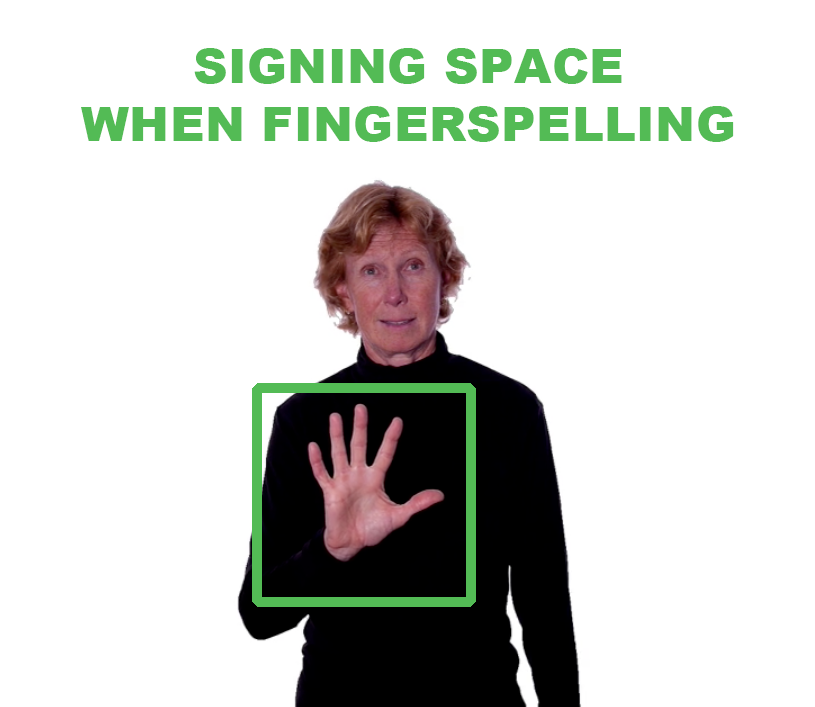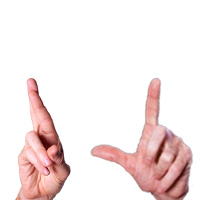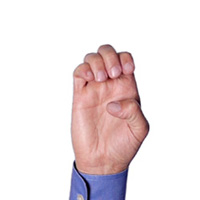Signing Space When Fingerspelling
Signing space is where you form signs. When you fingerspell, the signing space is more contained than when you are signing in general. To achieve the correct fingerspelling signing space, bend your elbow so your dominant hand is in front of your chest, with your palm facing forward. This allows your chest to be a solid background for better readability.

Things to Remember When Fingerspelling:
-
Use your dominant hand. Do not switch hands or use two hands when fingerspelling.
-
When you fingerspell, your palm should generally face out toward the receiver, not toward yourself. In group settings, it is not possible to direct your spelling to all receivers.
-
Keep your elbow close to your waist; do not let it drift away from your body.
-
Your hand should be shoulder height and centered in front of the body. Research shows that deaf people focus on the chin/throat area when reading signed communication but still see the whole sign space. Your hand should not block your mouth to allow for supplemental lip-reading clarification and non-manual marker grammatical clues.
Resources
Adapted from: Cartwright, B. E., & Bahleda, S. J. (2007). Where Does My Hand Go When I Fingerspell? In Fingerspelling in American Sign Language (2nd ed., p. 9). RID Press.
 Brenda Cartwright is a seasoned interpreter, a master teacher, well known presenter, and author of several best selling sign language and interpreting textbooks from the RID Press. For 35 years Brenda was the Chair of the Sign Language Interpreter Program at Lansing Community College in Lansing, Michigan.
Brenda Cartwright is a seasoned interpreter, a master teacher, well known presenter, and author of several best selling sign language and interpreting textbooks from the RID Press. For 35 years Brenda was the Chair of the Sign Language Interpreter Program at Lansing Community College in Lansing, Michigan. Tips When Starting to Fingerspell
Tips When Starting to Fingerspell Does it matter which hand I sign with? Using Your Dominant Hand When Signing
Does it matter which hand I sign with? Using Your Dominant Hand When Signing Common Fingerspelling Mistakes New Signers Make
Common Fingerspelling Mistakes New Signers Make






